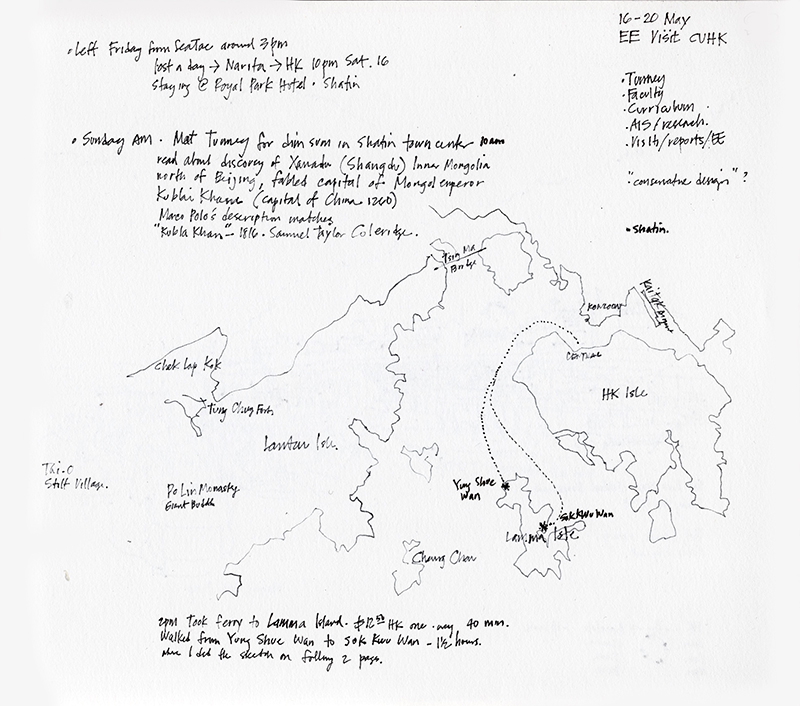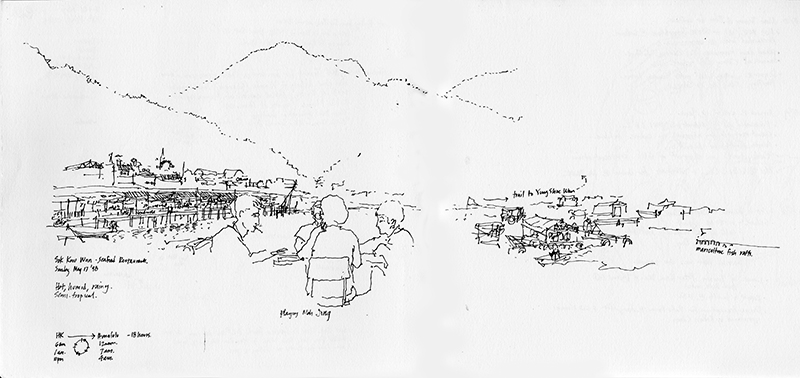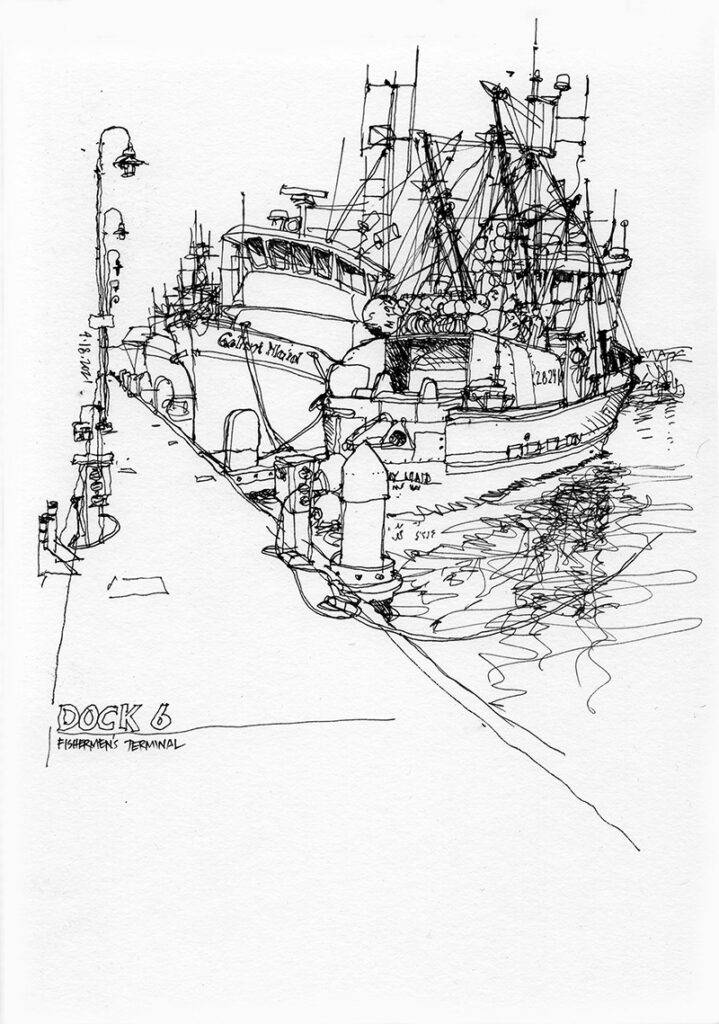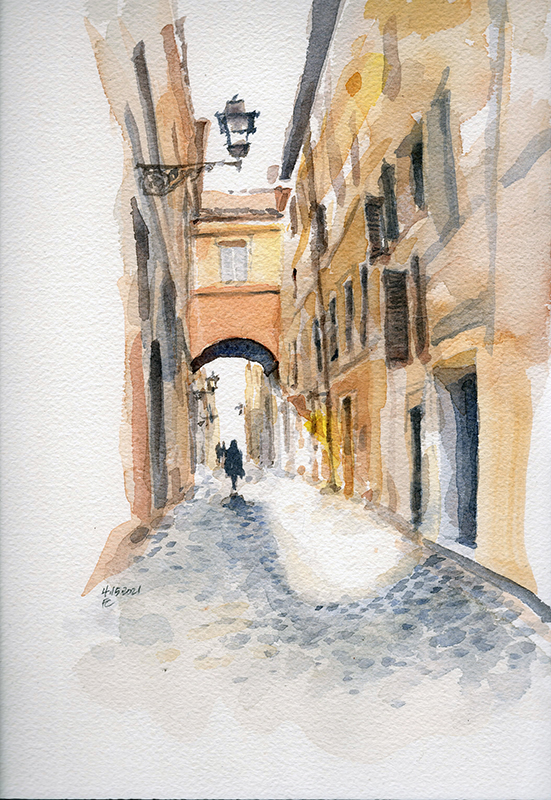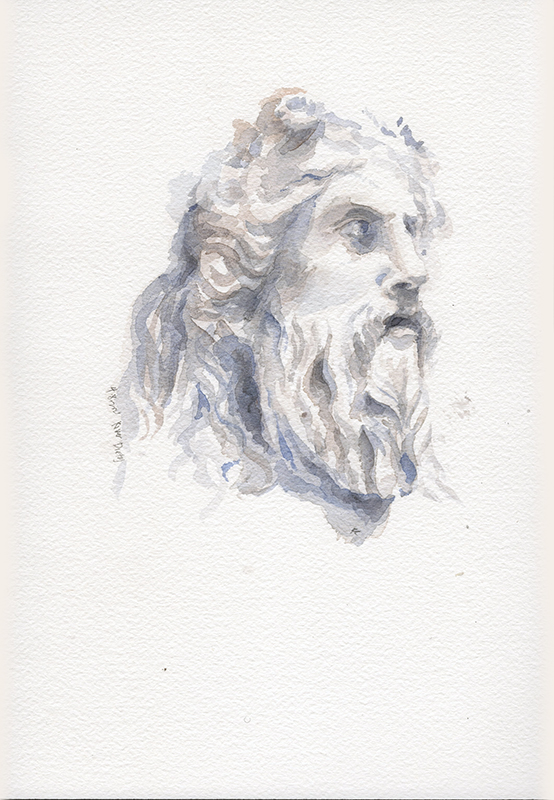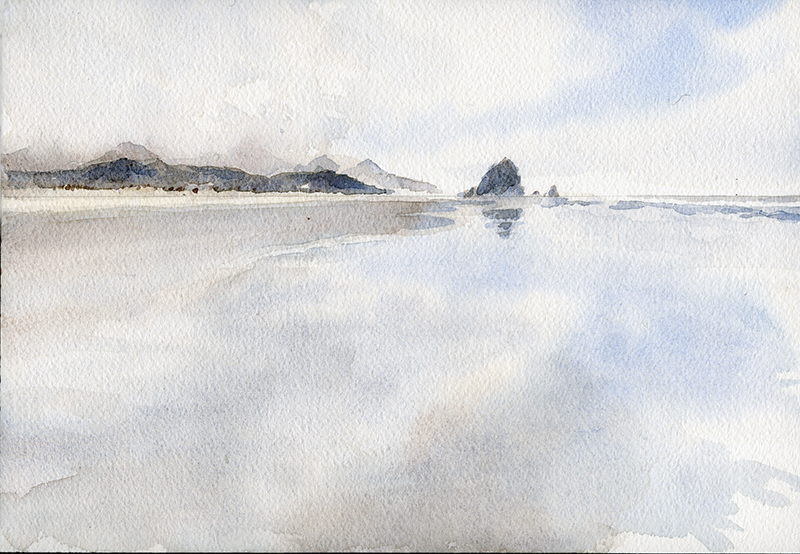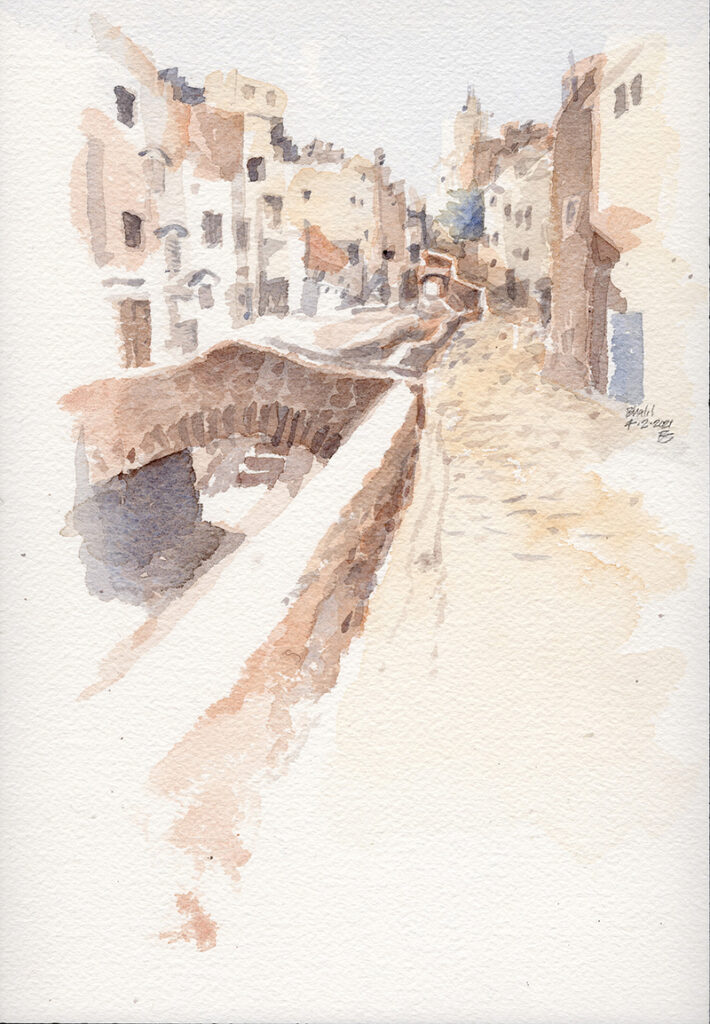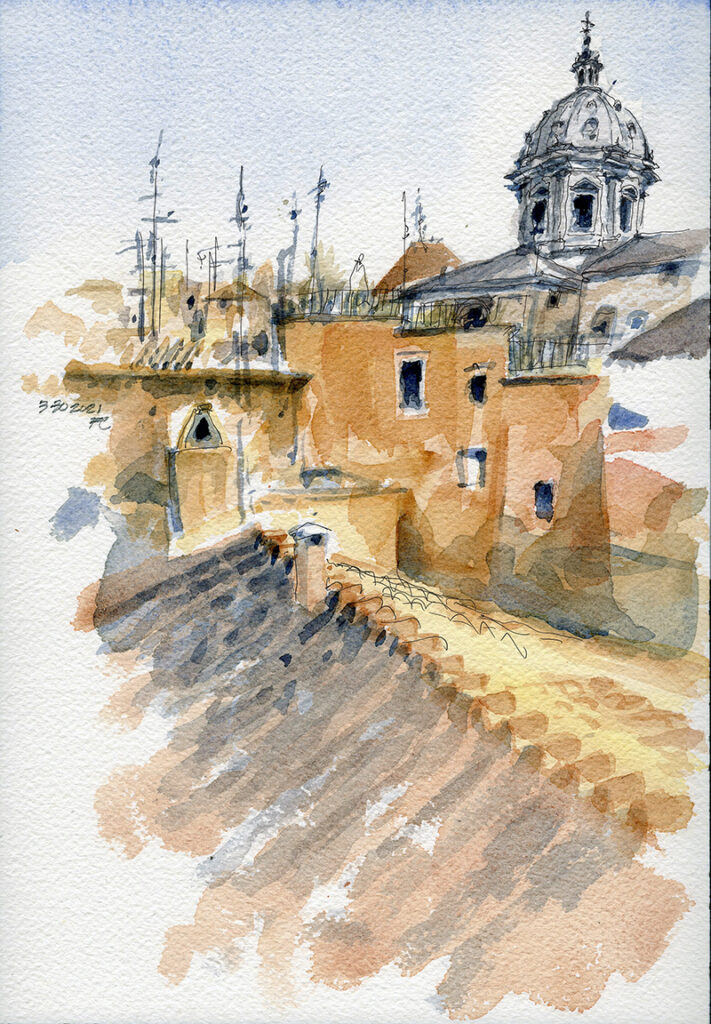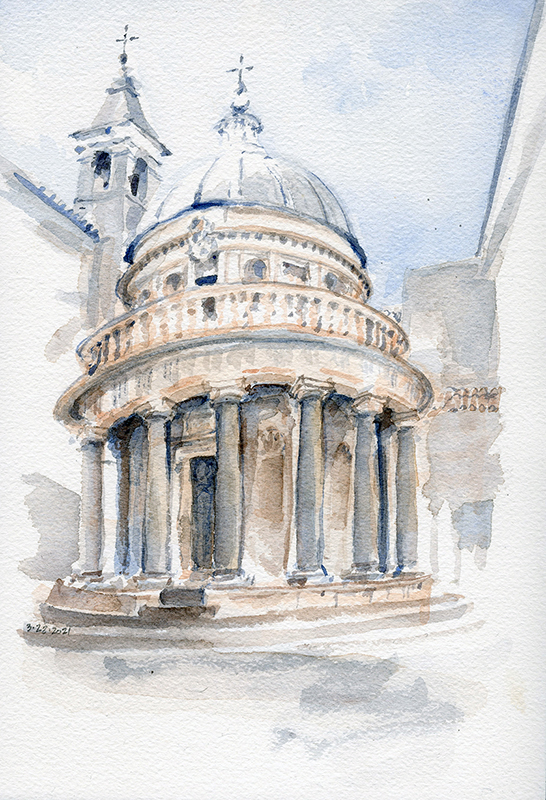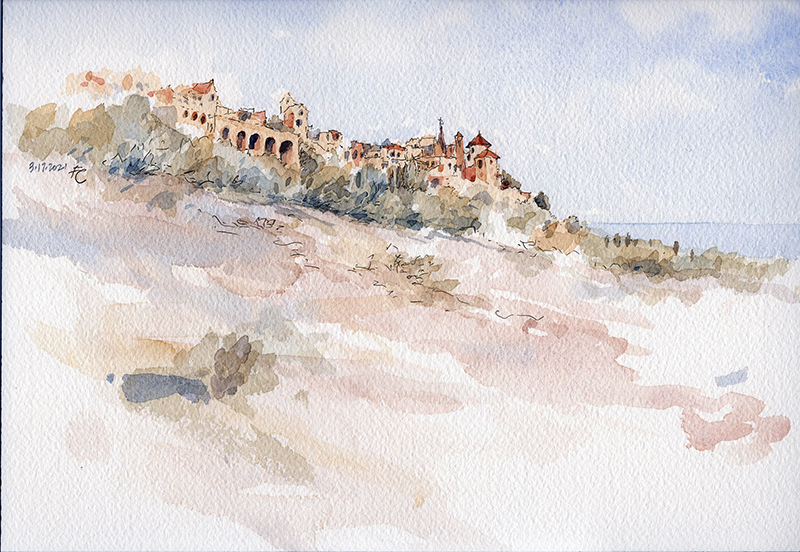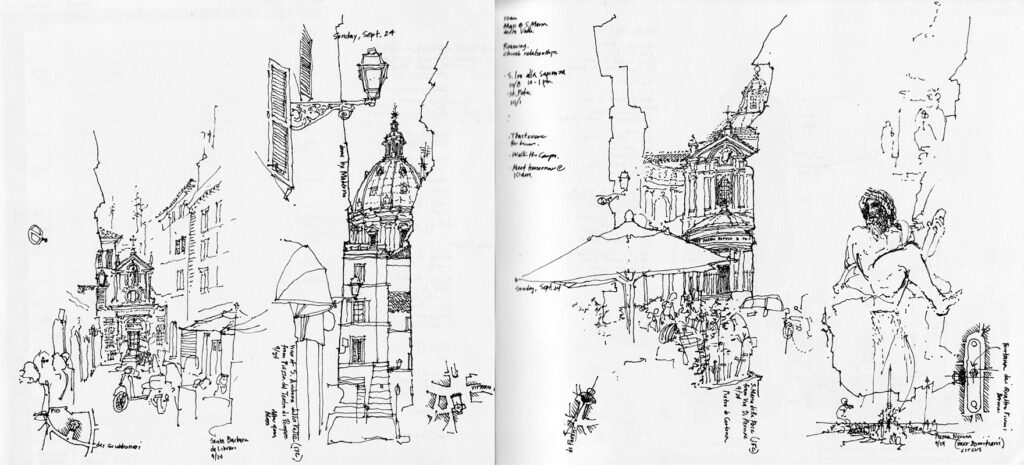
Not quite 20 years ago, but close enough. These two pages contain the first sketches I did soon after arriving in the Eternal City in the fall of 2000 to teach in the UW’s Architecture in Rome program. Truly, a transformative experience. Wandering the area around Campo de Fiori, I sketched three churches—S. Barbara de Librari, the dome of S. Andrea della Valle, and S. Maria della Pace—as well as an ill-proportioned fragment of Bernini’s fountain in the Piazza Navona. I chose to include small plans showing the context of each in the urban fabric.

